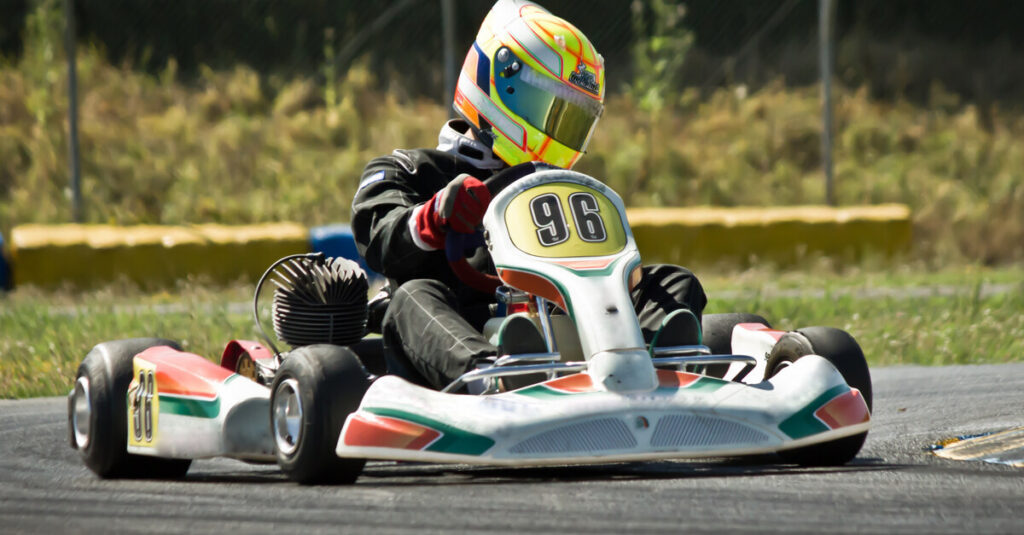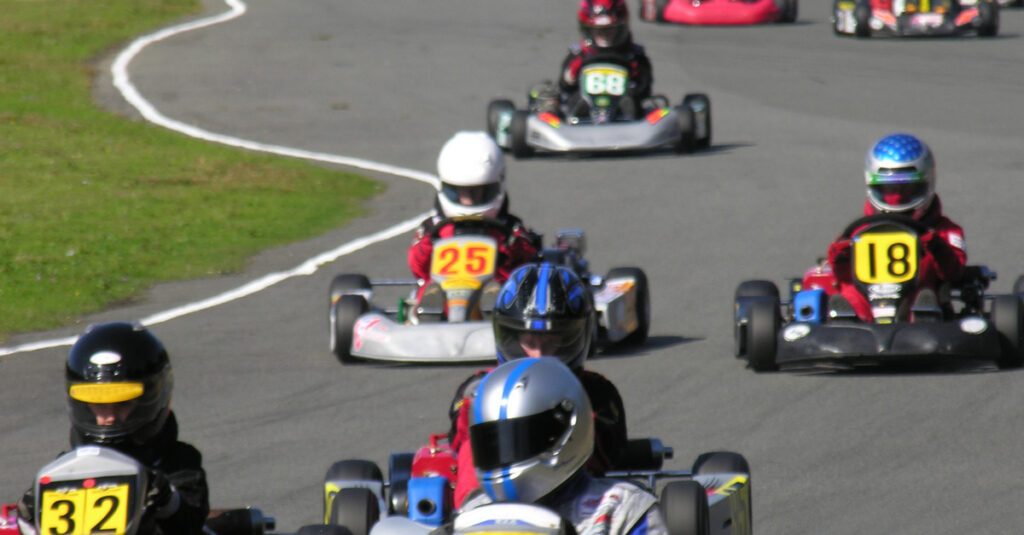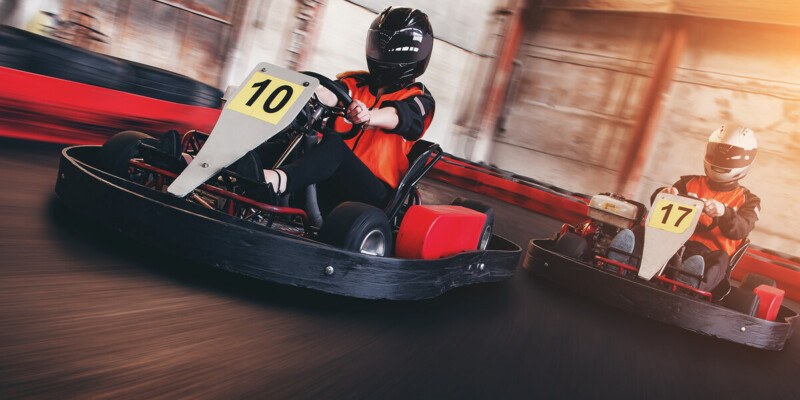Go-karting might seem basic on the surface, but there’s a lot that goes into perfecting your craft. Here are some tips that should help you up your game.
Think you’ve mastered go-karting? Think again! Whether you’re chasing speed on a weekend track, competing for a podium finish, or just want to force your friends to eat your dust, there’s always room to sharpen your skills. Go-karting is more than just floor-to-the-throttle speed—it’s precision, strategy, and an unrelenting pursuit of perfection. Buckle up because we’re about to share ten tips that’ll greatly improve your go-karting skills, transforming you from a casual driver to a true racing champion.
Learning Kart Setup and Mechanics
Your go-kart isn’t just a tool—it’s your racing partner. That’s why it’s best to start by understanding how it works, which will allow you to make tweaks for optimal performance as you improve. Learn the basics of kart setup, from tire pressures to gear ratios. For example, slightly lowering your tire pressure may improve traction, while adjusting the seat position can fine-tune weight distribution. Every kart—and every track—is different, so pay attention to how setup changes affect your performance. The more mechanically savvy you are, the more control you’ll have over your kart’s behavior.
Perfecting Your Racing Line

The racing line is your lifeline in go-karting. It’s the magic path that balances speed and precision while helping you conquer curves without losing valuable seconds. To perfect your racing line, aim to enter wide, clip the apex of the turn, and exit wide for maximum momentum. Don’t just hug corners; instead, focus on smoothness and flow. Think of your kart’s trajectory like tracing a painter’s curve—elegant, fluid, and precise. While the ideal racing line will change depending on the track you’re driving on, by practicing it regularly, you’ll be able to transfer those skills to new tracks, helping you glide through laps with newfound ease and efficiency.
Mastering the Art of Braking
The one thing more important than speed on the track is knowing when to slow down. Braking is an art form, and mastering it can change how you approach every curve. Braking too early kills your momentum while braking too late invites chaos. The solution? Learn to “trail brake.” Begin your braking slightly before the corner entrance and ease off as you turn so you maintain a grip while transitioning smoothly back to acceleration. Craving advanced challenges? Experiment with threshold braking—pushing the limits without locking the wheels. Nailing this balance can mean the difference between a decent lap and a record-breaking one.
Enhancing Your Vision and Awareness on the Track
Seeing everything that lies ahead of you on the track, from the path it takes to the riders in front of you, is crucial when making split-second decisions. That means your vision plays a massive role in staying aware, anticipating moves, and spotting opportunities to overtake. Train yourself to focus on the corner ahead, not just the one you’re in. This forward-thinking approach gives you the extra milliseconds needed to adjust and react. Meanwhile, maintain your peripheral awareness to keep an eye on rival drivers and avoid surprises. By combining sharp observational skills with quick reflexes, you’ll dominate the track like a pro.
Improving Physical Fitness for Better Performance
Karting is more physically demanding than it looks. Intense cornering forces can wear you down quickly. Building your core strength, endurance, and stamina will make a noticeable difference on the track. Core and upper-body workouts specifically help you handle the G-forces and steering resistance karts demand. Don’t forget cardio training, either, as it boosts your endurance so you can maintain peak performance throughout the entire session or race. Stronger, fitter drivers often have the edge, especially in longer races.
Nurturing Mental Focus and Strategy
Of course, karting isn’t just a physical challenge; it’s equally a mental game. Staying composed under pressure, quickly analyzing your opponent’s weaknesses, and plotting the perfect overtaking move require razor-sharp focus. Practice mindfulness techniques, such as deep breathing, to stay calm when adrenaline is surging. Also, be sure to develop race strategies, like calculating when to defend versus attack or deciding how much to push during qualifying laps. The best kart racers win with their minds as much as their skills.
Watching Professional Racers

Sometimes, the best teacher is observation. Watch professional go-karting races, keeping an eye on the drivers’ lines, braking points, and overtaking tactics. Many of the finest racing strategies come from mimicking and adapting what pros do on the track. Slow-motion replays and onboard cameras can reveal subtle techniques, like how a pro adjusts their body position or adapts based on rival movements. Whether you’re following FIA Karting Championship highlights or watching local legends, there’s always something to learn.
Participating in Regular Practice Sessions
While all of these tips for improving your go-kart skills we’ve covered so far are great in theory, they don’t mean much until you put them into practice. The more time you spend on track, the more attuned you’ll become to your kart and the intricacies of racing. Treat every practice lap as an opportunity to experiment. Test different racing lines, braking zones, or gear setups. Pay attention to feedback from your kart—how it reacts on tight corners, its grip on straightaways, or its responsiveness when accelerating out of turns. And be sure to try out different tracks to further improve your skills. If you live in Southern Texas, be sure to stop by and give our go-kart track in Houston a try. Consistent practice will transform even the most casual drivers into confident competitors.
Utilizing Technology for Analysis and Improvement
Recent advancements in racing technology have been game-changers for aspiring drivers. It’s possible to equip your kart with a lap timer or use smartphone apps and onboard cameras to analyze your performance. With this kind of tech, you can review footage to pinpoint mistakes or missed opportunities, such as suboptimal racing lines or delayed overtaking maneuvers. On top of that, data-analysis tools can track metrics like corner speeds, split times, and lap consistency, providing powerful insights that help refine your approach. Treat these tools as your personal coach—they will accelerate your learning curve.
Engaging in Competitive Racing Events
Even though practice is great, there’s no substitute for the experience you can get out of a real competition. Put your skills to the ultimate test by participating in local races or amateur leagues. Competitive events push you to adapt to unpredictable scenarios, like rival drivers jostling for position or tricky track conditions. They also immerse you in the vibrant karting community—an invaluable network of racers, enthusiasts, and mentors passionately invested in the sport. Still, be sure not to put too much pressure on winning or getting a top-three spot early on. These competitions are more about the experience, showing you where you can adapt and learn. Once you’ve mastered the basics, you can start pushing for that checkered flag.


